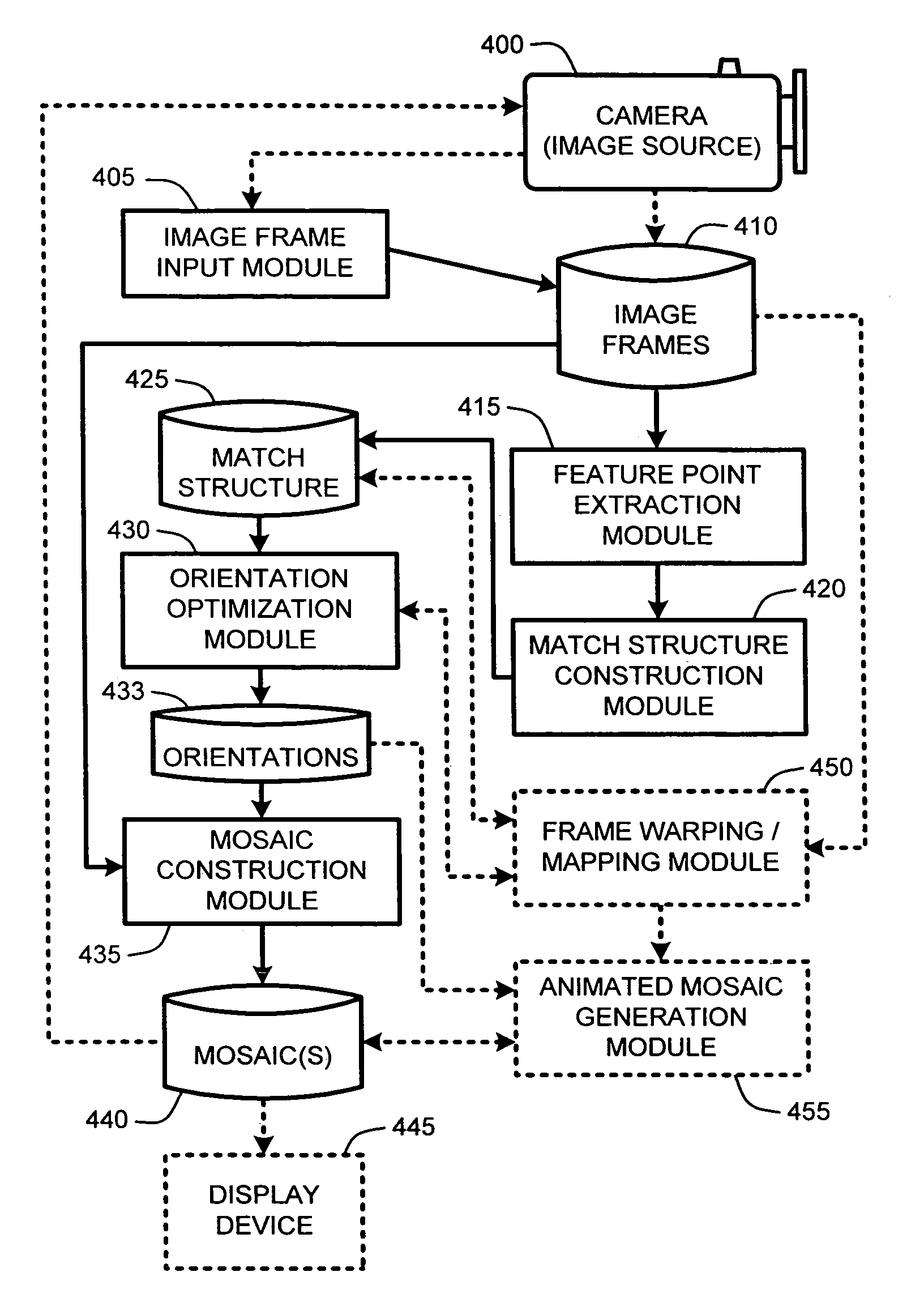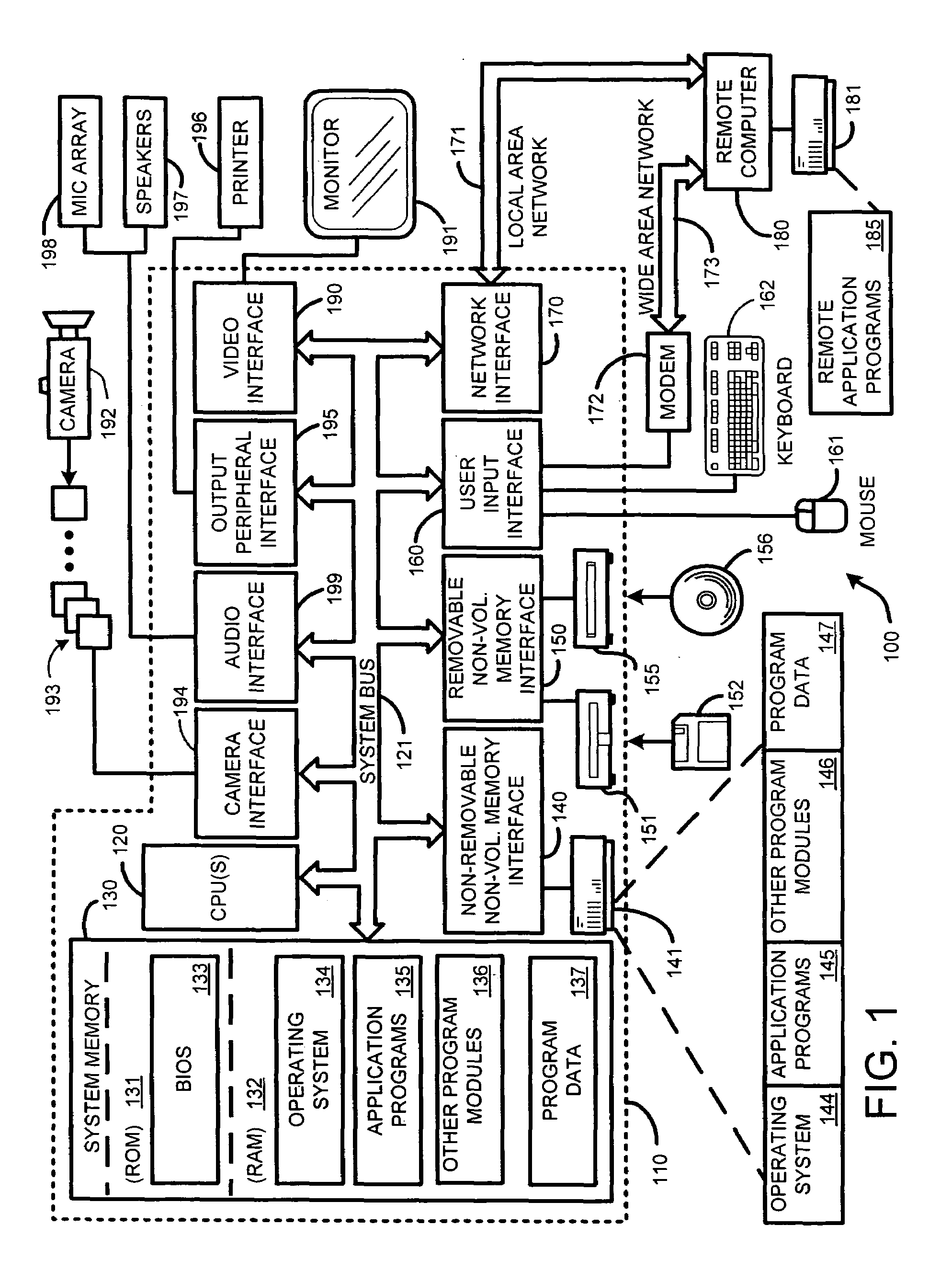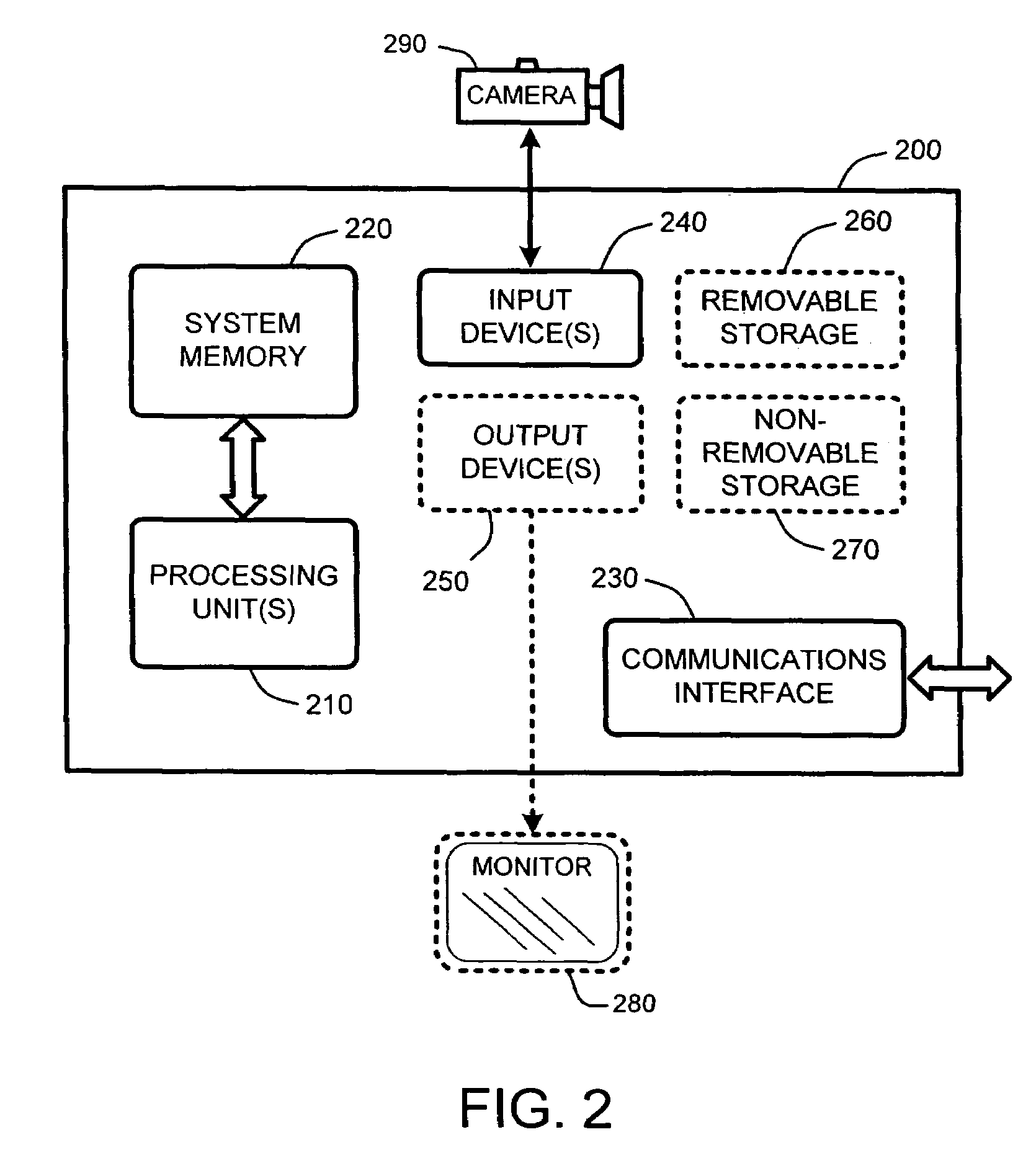Video registration and image sequence stitching
a video registration and image sequence technology, applied in the field of mosaiced panoramic image construction, can solve the problems of difficult to match such large numbers of images using matching techniques performed by many mosaicing schemes, complicated process of mosaic generation, and inability to generate thousands of images over a very short period, so as to reduce the computational complexity of optimizing image orientation
- Summary
- Abstract
- Description
- Claims
- Application Information
AI Technical Summary
Benefits of technology
Problems solved by technology
Method used
Image
Examples
Embodiment Construction
[0042]In the following description of the preferred embodiments of the present invention, reference is made to the accompanying drawings, which form a part hereof, and in which is shown by way of illustration specific embodiments in which the invention may be practiced. It is understood that other embodiments may be utilized and structural changes may be made without departing from the scope of the present invention.
1.0 Exemplary Operating Environments:
[0043]FIG. 1, FIG. 2, and FIG. 3 illustrate various examples of suitable computing environments on which various embodiments and of a “Keyframe Stitcher,” as described herein, may be implemented.
[0044]For example, FIG. 1 illustrates an example of a general computing system environment 100. The computing system environment 100 is only one example of a suitable computing environment and is not intended to suggest any limitation as to the scope of use or functionality of the invention. Neither should the computing environment 100 be inte...
PUM
 Login to View More
Login to View More Abstract
Description
Claims
Application Information
 Login to View More
Login to View More - R&D
- Intellectual Property
- Life Sciences
- Materials
- Tech Scout
- Unparalleled Data Quality
- Higher Quality Content
- 60% Fewer Hallucinations
Browse by: Latest US Patents, China's latest patents, Technical Efficacy Thesaurus, Application Domain, Technology Topic, Popular Technical Reports.
© 2025 PatSnap. All rights reserved.Legal|Privacy policy|Modern Slavery Act Transparency Statement|Sitemap|About US| Contact US: help@patsnap.com



